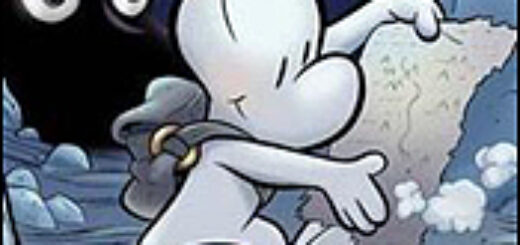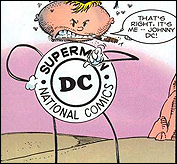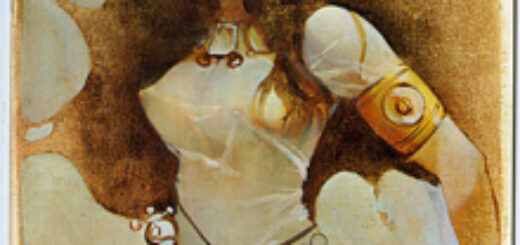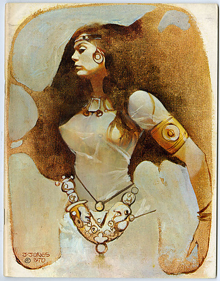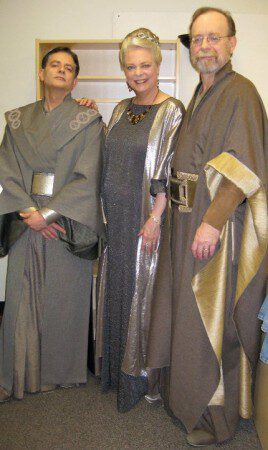Mindy Newell: Are Comics Genetic?
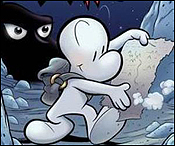 Is reading comics genetic? Is there a gene that dictates whether or not you’re going to be a comics lover?
Is reading comics genetic? Is there a gene that dictates whether or not you’re going to be a comics lover?
I don’t remember when I first fell in love with reading comics. Hell, with reading, period. Just got off of the phone from my mom, who said that by the time I was in kindergarten I always had my nose in a book, which puts me at about four years old. She also said that I was reading at the third grade level
“What about before kindergarten, Mom?”
“You would go to our bookshelves and pull out a book and turn the pages and talk to yourself as if you were reading.”
“Was I?”
“I don’t know, I don’t remember. Oh, and you loved to look at the illustrations.”
“You mean picture books?”
“No, I mean the illustrations in Last Of The Mohicans and Alice In Wonderland and The Three Musketeers. You got milk stains over our Book-of-the-Month Club leather-bound copies with the N.C. Wyeth drawings and drove your father nuts.”
I still get food and drink all over my books.
“What about comics?”
“I just remember that you always read them.”
“That was in the ‘50’s, right? Weren’t you worried that I was going to corrupt my poor innocent brain?”
“No. You were reading, that’s what was important.”
“But did you ever read comics? Did Daddy?”
“Nope. Neither of us.”
“And Glenn never read them, either, right?”
“You were the only one.”
Are comics genetic? Is there a gene that dictates whether or not you’re going to be a comics lover?
Just got off the phone from Alixandra.
“Hey, Alix, you weren’t really a comics reader when you were a kid, right?”
“Nope. Well, Betty And Veronica.”
“But I don’t remember you reading them the way I do, right?”
“Right. But I loved reading.”
“But not comics. Not like me.”
“No.”
So reading comics isn’t genetic. There is no gene that dictates whether or not you’re going to be a comics lover.
But…
Several weeks ago I went out to dinner with the family – mom, dad, my brother and sister-in-law, and my soon-to-be 12 years old niece, Isabel.
She had Jeff Smith’s The Complete Bone Adventures Volume 1 on her lap, and was trying to surreptitiously read without getting caught or getting food on it.
I was so impressed. Not for trying to sneak reading while out to dinner with others – that’s not exactly polite social manners, is it? – but for having discovered Jeff Smith’s totally cool story on her own.
I love Bone, too, Isabel.
Isabel loves comics. Has it been my influence? I’m not sure. Meaning, what came first, the chicken or the egg? I remember giving her a full year’s worth of Louise Simonson’s Power Pack for her 5th birthday – I think it was her 5th birthday, this is what happens to your brain on menopause; girls, don’t do menopause if you can avoid it – but was it because I knew she loved comics or was it because I wanted to turn her on to comics?
She has a huge collection of Archie, including the graphic novel that collects stories from the beginning to the present. Favors Veronica over Betty (she looks like little Ronnie, but she hates when I tease her about it) and thinks Reggie is mean, Jughead is dumb, and Midge and Moose are cool. Izzy really likes the Archie Marries Veronica/Archie Marries Betty storyline. But she’s not so much for the “new look” – she goes for the classic.
Me, too.
I’ve got a comic book she made for me when she was six. It’s about a vampire. Isabel loves vampire stories.
Me, too.
So reading comics is genetic? There is a gene that dictates whether or not you’re going to be a comics lover?
Damned if I know.
TUESDAY MORNING: Michael Davis Expletive Deleted
TUESDAY AFTERNOON: Emily S. Whitten, Women, and Costumes

